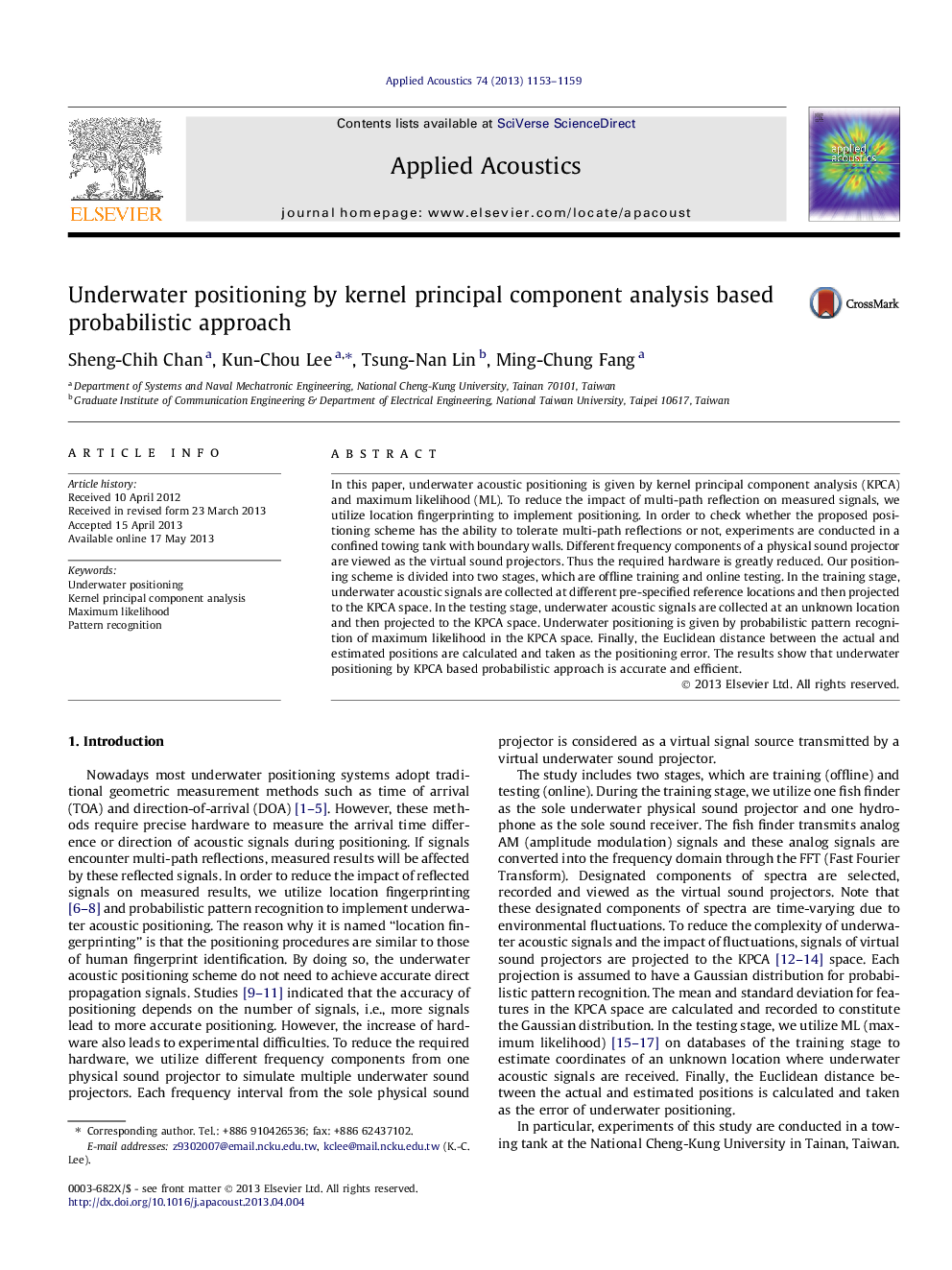| Article ID | Journal | Published Year | Pages | File Type |
|---|---|---|---|---|
| 754662 | Applied Acoustics | 2013 | 7 Pages |
In this paper, underwater acoustic positioning is given by kernel principal component analysis (KPCA) and maximum likelihood (ML). To reduce the impact of multi-path reflection on measured signals, we utilize location fingerprinting to implement positioning. In order to check whether the proposed positioning scheme has the ability to tolerate multi-path reflections or not, experiments are conducted in a confined towing tank with boundary walls. Different frequency components of a physical sound projector are viewed as the virtual sound projectors. Thus the required hardware is greatly reduced. Our positioning scheme is divided into two stages, which are offline training and online testing. In the training stage, underwater acoustic signals are collected at different pre-specified reference locations and then projected to the KPCA space. In the testing stage, underwater acoustic signals are collected at an unknown location and then projected to the KPCA space. Underwater positioning is given by probabilistic pattern recognition of maximum likelihood in the KPCA space. Finally, the Euclidean distance between the actual and estimated positions are calculated and taken as the positioning error. The results show that underwater positioning by KPCA based probabilistic approach is accurate and efficient.
